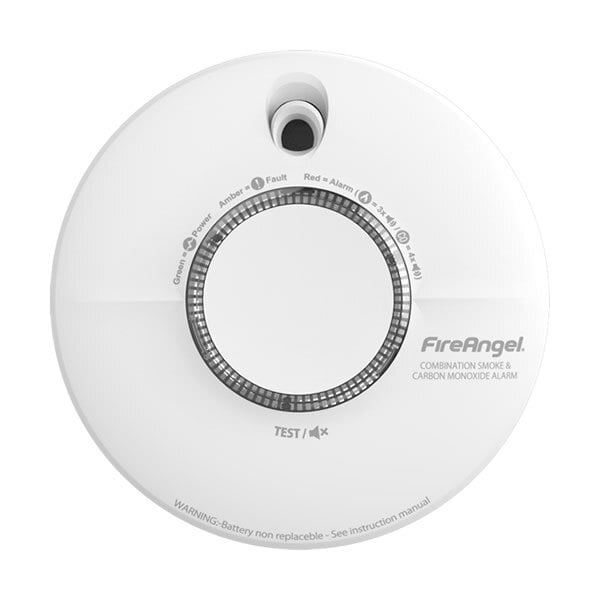-
Contact
Sales & Customer Service
0800 612 6537 support@safelincs.co.uk Live ChatDelivery Enquiries
0800 077 6149 - Resources
Fire & Safety Solutions
CALL OUR TEAM NOW 0800 612 6537
Lines open today 8am - 6pm
Free Delivery
on 100s of Products
Live Chat - Online
Instant help & Advice
Trade Discounts
and exclusive pricing
0% Credit Available
Open an account now
5 Star Customer Feedback
Combined Smoke & Carbon Monoxide Alarms
Smoke alarms detect fires as early as possible to give the occupants time to leave a building. Carbon Monoxide alarms warn occupants about any presence of carbon monoxide gas, which is known as the silent killer, as it is tasteless, odourless and colourless. The combined smoke and carbon monoxide alarms in this section detect both of these dangers, to protect lives with the minimum of space taken up by detectors.
These combination alarms either have different audible alarms to distinguish between which danger is present or with an additional voice alert, giving either FIRE, FIRE or WARNING CARBON MONOXIDE warnings to give the earliest indication of danger so you can take the appropriate action.
Combination Carbon Monoxide and Smoke Alarm 10 Yr Warranty - Kidde K10SCO
- Product Life: 10 years
- Battery: 2 x AA alkaline battery powered (included)
- Warranty: 10 year warranty
- Combined optical smoke and carbon monoxide detector
- Ideal for hallways, bedrooms, and living rooms
- Voice alarm and sounder: different warning messages for smoke and CO
- Certified to BS EN 14604: 2005 (smoke alarm)
- Certified to BS EN 50291-1: 2018 (CO alarm for domestic use)
10 Year Longlife Battery Combination Optical Smoke and CO Alarm - FireAngel SCB10-R
- Product Lifespan: 10 years
- Battery: Built-in, lasts the life time of your product
- Warranty: 5 year warranty
- Combined optical smoke and carbon monoxide detector
- Ideal for hallways, bedrooms and living areas
- Sleep Easy™ function
- Kitemarked to EN 14604: 2005 (smoke detection)
- Kitemarked to EN 50291-1 (carbon monoxide detection)
- Suitable for ceiling installation
Combination Carbon Monoxide and Smoke Alarm 10 Yr Warranty - Kidde 10SCO
- Product Lifespan: 10 years
- Battery: 2 x AA alkaline batteries (included)
- Warranty: 10 year warranty
- Voice Alarm and Sounder: Different Warning Messages for Smoke and CO
- Kitemarked to BS EN 50291-1: 2018 (CO alarm for domestic use)
- Kitemarked to BS EN 14604: 2005 (smoke alarm)
- Suitable for ceiling installation
4.8 out of 5 stars
View Product
| 1 unit |
£21.90 inc VAT £18.25 ex VAT |
|---|---|
| 2+ units |
£21.30 inc VAT £17.75 ex VAT |
| 5+ units |
£20.10 inc VAT £16.75 ex VAT |
What is a smoke & carbon monoxide detector?





















